Samhwa Gwangwang Nongwon (삼화관광농원)
16.2Km 2024-03-04
208 Immyeon-ro, Gyeom-myeon, Gokseong-gun, Jeollanam-do
061-362-8586,7
Samhwa Gwangwang Nongwon is a Korean restaurant specializing in duck dishes. Its signature menu is the ori jeongol (duck hot pot). The rich broth, boiled with ample duck meat, vegetables, and perilla seeds, is exceptionally flavorful. Another popular dish is the ori jumulleok (spicy stir-fried marinated duck), where tender meat seasoned with spicy yet sweet sauce pairs perfectly with steamed white rice.
Association for Preservation of Pilbong Farmers Music of Imsil (임실필봉농악보존회)
16.2Km 2024-12-13
272 , Gangun-ro, Imsil-gun, Jeonbuk-do
+82-63-643-1902
Chwirakwon is a popular hanok stay operated by the Association for the Preservation of Pilbong Farmer's Music of Imsil. Chwirakwon offers rooms for two or for groups, depending on the number of guests. There are 11 guest rooms, all of which have a private bathroom with a shower. It is recommended that you check ahead of time whether cooking facilities are available in each room. At Pilbong Cultural Village, you may dine in the restaurant or rent a grill. A permanent performance is held every Thursday through Saturday under the theme of Imsil Pilbong Nongak. Nearby tourist attractions include Okjeongho Lake and the Hoemunsan National Recreational Forest.
Okjeongho Lake Gujeolcho Theme Park (옥정호 구절초테마공원)
16.4Km 2025-01-16
Maejuk-ri, Jeongeup-si, Jeonbuk-do
+82-63-539-6171
Okjeongho Lake Gujeolcho Theme Park was officially formed in 2006 in an area that used to be called Manggyeongdae Terrace. Out of the park’s 12 hectare of land, approximately 5 hectare of land is filled with Gujeolcho (Siberian chrysanthemum) and a pine tree forest. The park also has walking paths and rest areas for visitors to enjoy.
Uhwajeong Pavilion (우화정(내장산))
16.4Km 2025-01-17
936 Naejangsan-ro, Jeongeup-si, Jeonbuk-do
+82-63-538-7875
Uhwajeong Pavilion takes its name from the legend that the pavilion once grew wings and ascended into the heavens. The pavilion is located in the middle of a lake on the way to Naejangsan Visitor Information Center. The scenery of the pavilion and foliage reflecting on the lake is like a painting. Various flowers, trees, reeds, and foliage surrounding the pavilion create a more beautiful view.
Baegyang Tourist Hotel (백양관광호텔)
16.5Km 2025-01-07
941, Baegyang-ro, Jangseong-gun, Jeollanam-do
+82-61-392-2114
Baegyang Tourist Hotel is located next to Baegyangsa Temple at the foothills of Naejangsan Mountain. The rooms offer beautiful views of nature all year round, with some rooms showing the magnificent mountain while others showing a bird's-eye-view of the hotel's garden. The hotel is perfect for family vacations and business trips.
Naejangsan Cable Car (내장산 케이블카)
16.6Km 2024-04-07
936, Naejangsan-ro, Jeongeup-si, Jeonbuk-do
+82-63-538-8120
Visitors who take Naejangsan Cable Car will enjoy a stunning view of the entire park, then after a 300m walk from the cable car terminus they will reach Yeonjabong Peak’s observatory. The cable car starts from Naejangsan Visitor Information Center.
Myeonangjeong Pavilion (면앙정)
16.6Km 2025-01-09
382-11 Myeonangjeong-ro, Damyang-gun, Jeollanam-do
+82-61-380-2811
Myeonangjeong Pavilion is located on the slopes of Jebongsan Mountain in Damyang-gun. The pavilion was constructed in 1533 by Song Sun (1493-1583), who built it as a place for writing poems. After its construction, the pavilion served as a meeting place for scholars and intellectuals and was even frequented by Lee Hwang (1501-1570), a representative Confucian scholar who is pictured on the 1,000 won bill.
The roof of Myeonangjeong Pavilion was originally made of reeds, straw, grass and other materials which could not withstand the elements. After several repairs, the building was developed into the wooden structure that it is today.
From the back of the pavilion, you can see the mountain range and open wide fields; renowned scholars’ poems are engraved on the wooden panels that decorate the pavilion walls.
Naejangsan Mountain Visitor Information Center (내장산 탐방안내소)
16.7Km 2024-04-07
1207, Naejangsan-ro, Jeongeup-si, Jeonbuk-do
+82-63-538-7874
Located within Naejangsan National Park, the Visitor Information Center was first opened in July 1998 to promote the public’s understanding of nature and national parks, and to provide enhanced park services.
The Center features models of the topography and cultural relics of the mountain, videos of local plants and animals, and a history gallery.
Jeongeup Naejangsan Special Tourist Zone (정읍 내장산 관광특구)
16.8Km 2024-04-07
Naejang-dong, Jeongeup-si, Jeonbuk-do
+82-63-539-5193
Jeongeup Naejangsan Special Tourist Zone, which covers Naejangsan Mountain, Baegamsan Mountain and Ibamsan Mountain, is known for the most beautiful fall scenery in Korea. In the autumn, the zone is aflame with autumnal tints. Naejangsan Mountain has been referred to as the “Geumgang of Honam” since the Joseon dynasty.
Naejangsan Mountain is about 11 kilometers away from downtown Jeongeup, and its name means "many secrets in the mountains." The highest peak of Naejangsan Mountain is Sinseonbong Peak, which is 763 meters above sea level. The nine peaks of the mountain stand in a circle, similar to the shape of a horse’s hoof. As one of the eight scenic views of the nation, it boasts grand scenery. Geumseongyegok Valley, which embraces Geumseonpokpo Falls, Dodeokpokpo Falls and Baegamgyegok Valley, is also famous.
Since there are more than ten trekking courses, hikers can choose a course after taking their physical stamina or personal preference into consideration. The length of each course varies from 1.5 to 14 kilometers. For those who are not able to trek long distances, walking the 3.6 kilometer-long nature trail that leads to the flatland is a good option. Visitors can reach the observation platform easily by riding a cable car from the ticket office.
The number of tourists has been steadily increasing since the KTX train began to stop at Jeongeup Station. When the autumn colors are at its peak in particular, taking the KTX makes the trip to Naejangsan Mountain much easier for travelers, and prevents traffic jams. The Donghak Peasants Revolution Commemoration is held in May and the Naejangsan Fall Foliage Festival takes place in October.
* Current State of Jeongeup & Naejangsan Special Tourist Zone
1) Districts Covered: Naejang Districts (Naejang and Ssangam-dong) and Yongsan Districts (Yongsan and Sinjeong-dong), Jeongeuop-si, Jeollabuk-do
2) Area: 3,448,365㎡
* Tourist Attractions
Naejangsan National Park, Okjeongho Lake, Jeongeupsa Park, Jeongeupcheon Stream, Chungyeolsa Shrine, Donghak Peasant Revolution Memorial Hall, etc.

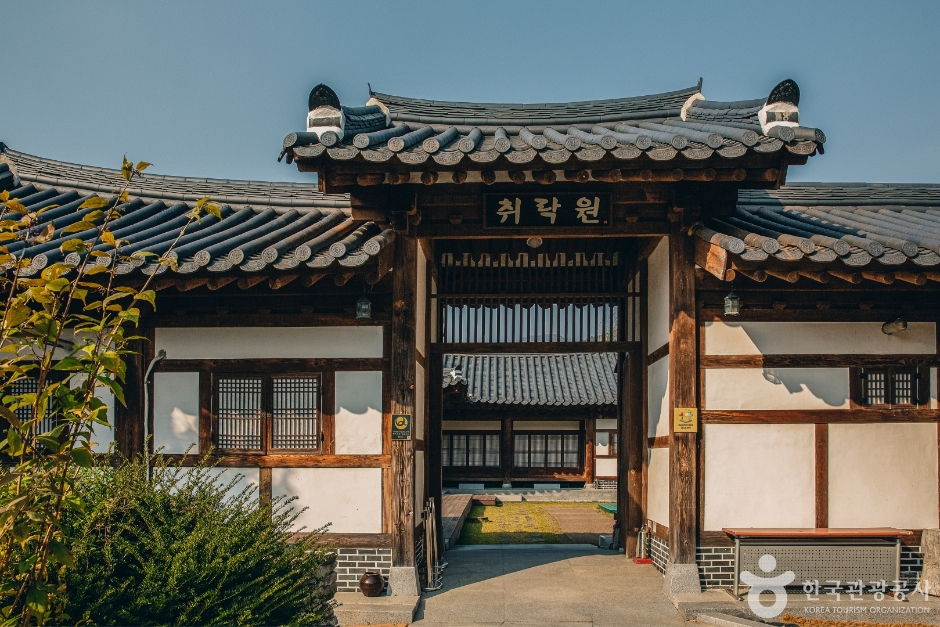
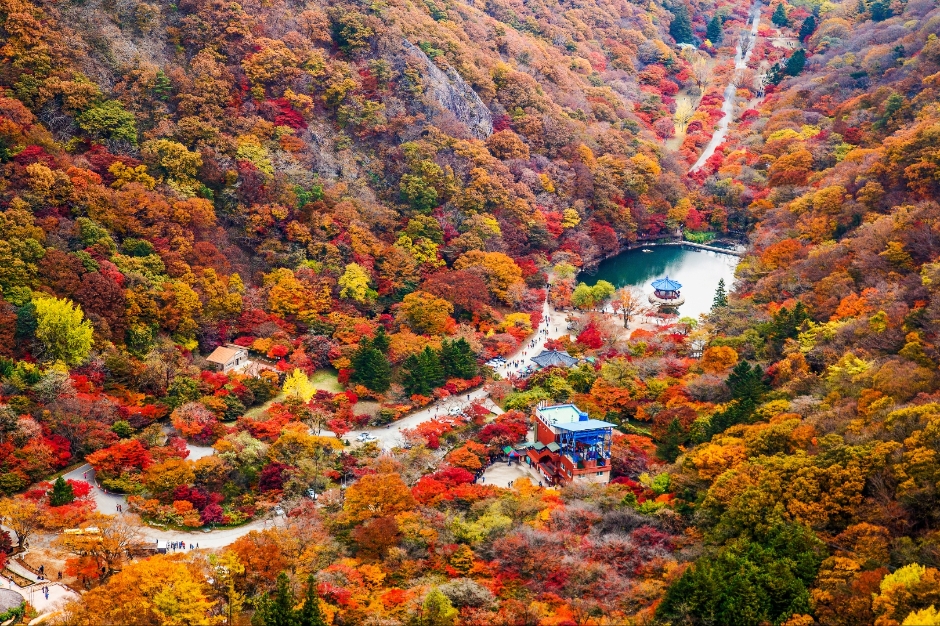
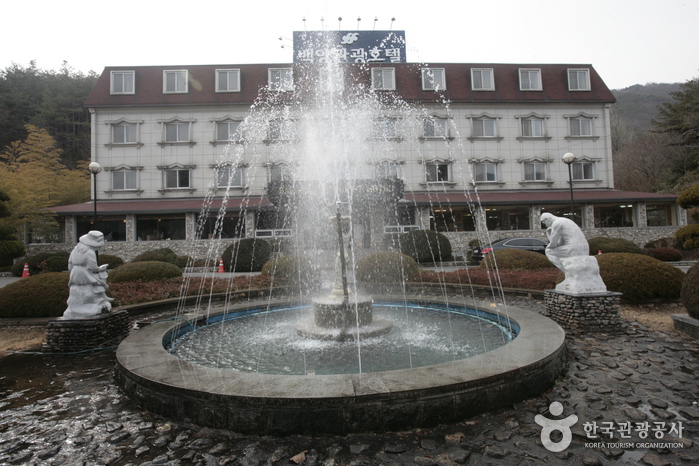
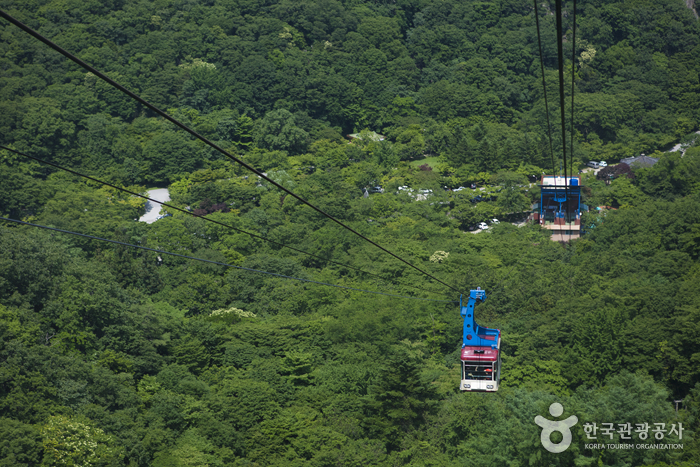
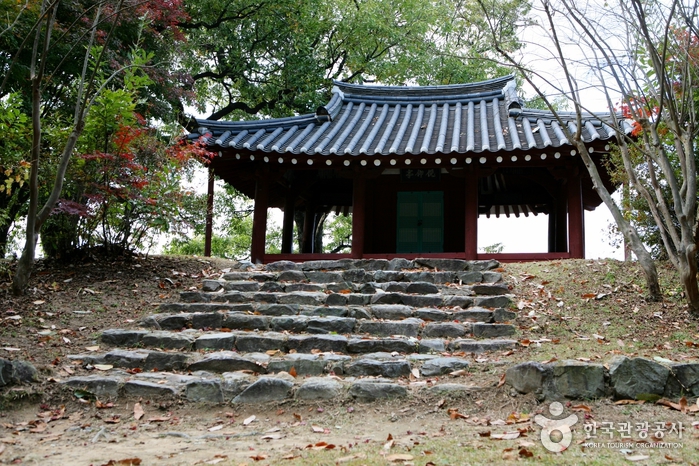
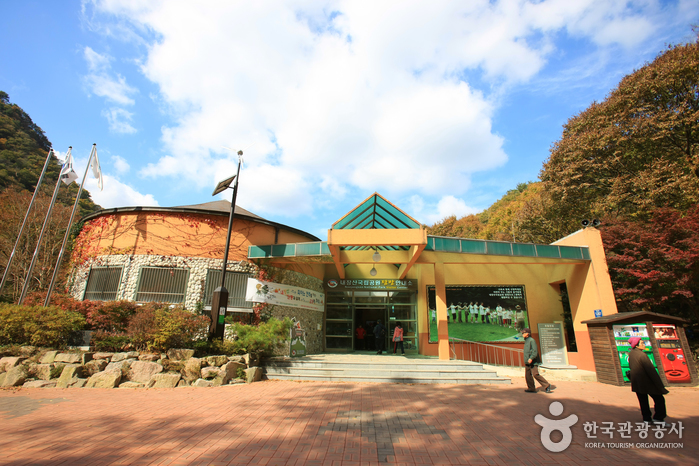
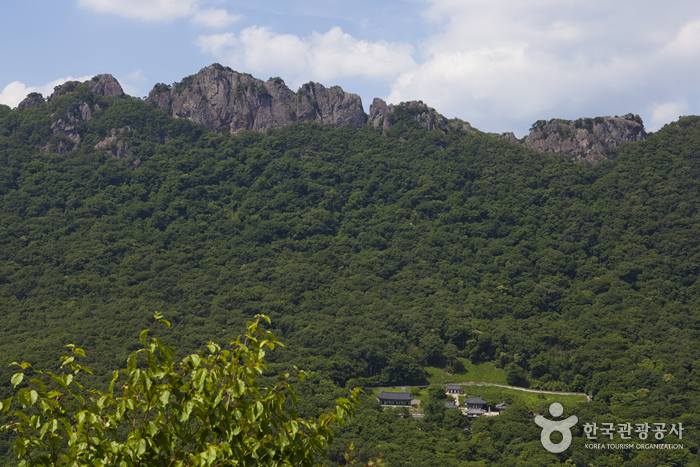
 English
English
 한국어
한국어 日本語
日本語 中文(简体)
中文(简体) Deutsch
Deutsch Français
Français Español
Español Русский
Русский